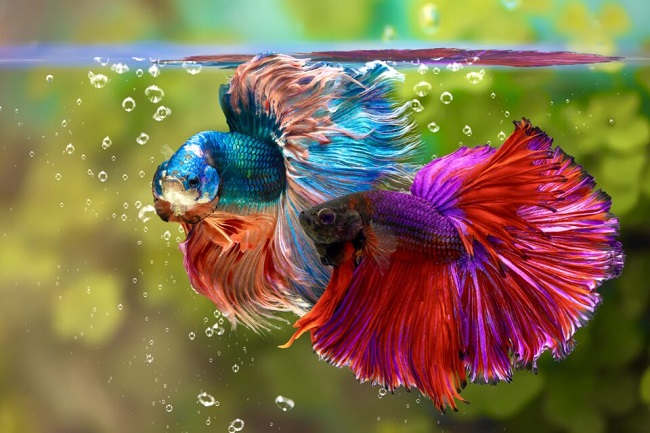Betta fish, also known as Siamese fighting fish, are loved for their vibrant colors and flowing fins.
However, their aggressive nature often raises questions about their cohabitation capabilities, particularly regarding whether a male and female betta can live together harmoniously.
This article delves into the intricacies of betta fish behavior and explores the feasibility and conditions of cohabiting male and female betta fish.

Understanding Betta Fish Behavior
Betta fish are solitary creatures with territorial instincts, making cohabitation tricky. Males are notorious for their aggressive behavior, primarily towards other males.
Read Also:
However, both genders can display aggressive tendencies when they feel their territory is threatened.
Can Male and Female Betta Fish Live Together?
The simple answer is that male and female betta fish should not generally be kept together. This recommendation arises from their aggressive nature, which can lead to fights, injuries, or even death.
However, there are certain circumstances and techniques that can be used to facilitate their cohabitation, which we will discuss further.
Breeding Times
One of the few times when male and female betta fish are brought together is during breeding.
Once the female has released her eggs and the male has fertilized them, the female should be removed from the tank, as the male becomes protective of the eggs and may attack the female.
Using a Divider
If you wish to house a male and female betta in the same aquarium without breeding them, a tank divider is a viable solution. This allows both fish to have their own territory and prevents direct contact, reducing the risk of aggression.
The Role of Tank Size
A larger tank can help to reduce territorial disputes between male and female betta fish. A tank of at least 20 gallons may provide each fish with enough space to establish their territory. However, the use of a divider is still strongly recommended.
Other Co-habitation Options
For those looking to keep multiple fish together, there are alternatives to housing a male and female betta fish together. Betta fish can usually live peacefully with non-aggressive, similarly sized species, such as neon tetras, cory catfish, and ghost shrimp.
Betta Fish: Health and Stress Factors
When considering keeping a male and female betta fish together, it is crucial to understand the impact this can have on their health and stress levels.
Betta fish can become stressed by several factors, including aggression from other fish, unsuitable living conditions, and insufficient space. Stress can lead to a weakened immune system, making your betta fish more susceptible to diseases.
It can also cause changes in behavior, such as decreased activity, loss of appetite, and less vibrant coloration. Therefore, minimizing stress is critical to maintaining your betta fish’s health.
Safe Introduction of Betta Fish
If you decide to attempt housing a male and female betta fish together, introducing them safely is essential. It’s recommended to place the female in a transparent container inside the tank, allowing the two fish to see each other without any physical contact.
This process can help them adjust to each other’s presence and reduce aggressive behavior once the female is released into the main tank.
Monitoring and Intervention
Even with careful introductions and a large, divided tank, constant monitoring is essential when attempting to house a male and female betta fish together.
Look for signs of aggression, stress, or injury, and be prepared to separate the fish immediately if problems arise.
Regular Care and Maintenance
Regardless of their living arrangements, all betta fish require regular care and maintenance. This includes a balanced diet, a clean and appropriately heated tank, and regular check-ups for signs of illness. Remember, a healthy betta fish is a happy betta fish!
Read Also:
Conclusion
While it’s not impossible for a male and female betta fish to share an aquarium, it requires careful planning, constant monitoring, and suitable conditions to minimize potential conflicts.
To ensure the wellbeing of your betta fish, it’s often better to keep them separate or choose tank mates of a different, non-aggressive species.
























